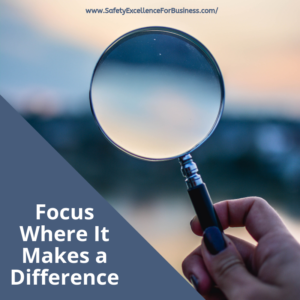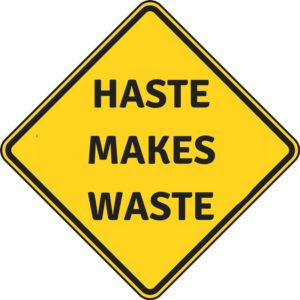In Orlando, Florida, there is a $2.3 billion, 21-mile, I-4 highway improvement project that has been underway since 2015. It is such a traffic headache that we try to avoid it as much as we can when we are driving across Florida.
 There have been five fatalities since the project began. All five of the fatalities have been “struck-by” incidents. The most recent occurred about October 1st, when a beam slipped off a piece of equipment and struck a worker on the head. One person was hit by a dump truck. Another died when he was hit by a piece of steel equipment. The fourth person died when a rebar cage fell on him, and the fifth person was killed when he was hit in the head by a pipe.
There have been five fatalities since the project began. All five of the fatalities have been “struck-by” incidents. The most recent occurred about October 1st, when a beam slipped off a piece of equipment and struck a worker on the head. One person was hit by a dump truck. Another died when he was hit by a piece of steel equipment. The fourth person died when a rebar cage fell on him, and the fifth person was killed when he was hit in the head by a pipe.
All construction was suspended to review the safety plans and to get everyone refocused on working safely. OSHA and safety experts have been involved in the analyses, “Until the root causes are determined, girder erection and installation are suspended.”
Suspending the work to get everyone focused, bringing in safety experts, and seeking root causes are a start, but they will not, in themselves, stop the fatal accidents. There is so much more going on that there are no root causes. The pressures to get the projects going again are intense.
There’s A Deeper Pattern…
Every fatality was a “struck-by” incident, which indicates that things are moving when the incidents happened. On projects like this one, there is huge pressure to keep on schedule and get the work done. The pressure to move too fast is great. Yet, as these incidents show, going faster results in things going more slowly, and people getting killed. Hurrying is a big problem!
Each person needs to be looking out for the others, talking together about how to do the job without anyone getting hurt, sharing ideas about how to do the work more effectively and safely. Supervisors and managers need to be talking with the people about getting the jobs done effectively and safely. Everyone needs to be kept informed on the status of the work and the details for each day’s work.
Toolbox meetings are a critical element in this. Everyone needs to be able to shut down a job if they see that there are safety issues that need to be addressed. Coming together to form safety teams to help build the focus on specific tasks would be useful. Building an environment where everyone is treated with respect and is open to having people speak up, be able to ask questions and look for better ways is important.
But working this way will be a challenge for them. They have many separate contractors, many people of different skill levels, and a worksite spread over 21 miles.
When I have talked with people in other situations about working this way, I often get funny looks. They tell me that they do not have time to work this way. They have to get the job done!
My belief is that they really do have to take the time to work this way because, in my experience, working this way is the fastest, safest and least costly way to get the work done. Just think about all the time that is lost and distractions that occur in investigations, dealing with OSHA, job shutdowns, fighting the unions, dealing with the lawyers, the media and the families that have suffered a loss of a loved one.
Working fast, ignoring the people, taking short-cuts and cutting corners all lead to higher costs, project delays and more people getting hurt. Call me 716-622-6467 and let’s talk deeper-pattern safety!
 There seems to be an interesting disconnect here. OSHA does focus on falls, but what about roadway deaths and homicides? These are serious workplace problems as well. What about the whole problem of workplace violence that begins with the lack of respect (bullying, harassment), and that can lead to serious business problems like poor productivity, high absenteeism, fighting, injuries, murder, and suicide?
There seems to be an interesting disconnect here. OSHA does focus on falls, but what about roadway deaths and homicides? These are serious workplace problems as well. What about the whole problem of workplace violence that begins with the lack of respect (bullying, harassment), and that can lead to serious business problems like poor productivity, high absenteeism, fighting, injuries, murder, and suicide? A review of the Bureau of Labor Statics summary of fatal occupational injuries for 2011-2017 shows a 1% drop in fatalities from 2016 to 2017 to a total of 5,147 people having lost their lives at work. This is about 9% higher than the 4,693 people killed in 2011. The top three 2017 fatalities categories are roadway accidents totaling 1,299 (up 15% since 2011); slips, trips and falls totaling 887 (up 23% since 2011); and murders and suicides totaling 733 (up by only 2% since 2011).
A review of the Bureau of Labor Statics summary of fatal occupational injuries for 2011-2017 shows a 1% drop in fatalities from 2016 to 2017 to a total of 5,147 people having lost their lives at work. This is about 9% higher than the 4,693 people killed in 2011. The top three 2017 fatalities categories are roadway accidents totaling 1,299 (up 15% since 2011); slips, trips and falls totaling 887 (up 23% since 2011); and murders and suicides totaling 733 (up by only 2% since 2011). We need courageous leaders who focus on the people, change and the future. Leaders value sharing information, building trust and interdependence, and helping people to see how their job is important for the success of the whole venture.
We need courageous leaders who focus on the people, change and the future. Leaders value sharing information, building trust and interdependence, and helping people to see how their job is important for the success of the whole venture. Go into your organizations listening to and talking with the people. Share your vision. Build trust and interdependence. Create safe spaces for people to talk with each other, to share and create the future. Everything will change. That is what I experienced at the Belle Plant.
Go into your organizations listening to and talking with the people. Share your vision. Build trust and interdependence. Create safe spaces for people to talk with each other, to share and create the future. Everything will change. That is what I experienced at the Belle Plant. As I travel around and watch things happening, I see so many people in a big hurry. We are coming to the end of the good weather so people are hurrying to get outside jobs finished up. Roofers are really busy and not taking the time to properly use and secure their fall protection. I read of a recent 29-story fall in New York City when a guy on a big construction site fell through an unsecured hole in the floor.
As I travel around and watch things happening, I see so many people in a big hurry. We are coming to the end of the good weather so people are hurrying to get outside jobs finished up. Roofers are really busy and not taking the time to properly use and secure their fall protection. I read of a recent 29-story fall in New York City when a guy on a big construction site fell through an unsecured hole in the floor. A good, proven approach is to have brief start up meetings to review the hazards of the day’s work, making sure we have the right PPE and other equipment in place and used, asking each other about what might go wrong and working to avoid this. We need to look over the schedules and be sure we have the equipment we need and the right people for the work.
A good, proven approach is to have brief start up meetings to review the hazards of the day’s work, making sure we have the right PPE and other equipment in place and used, asking each other about what might go wrong and working to avoid this. We need to look over the schedules and be sure we have the equipment we need and the right people for the work.




